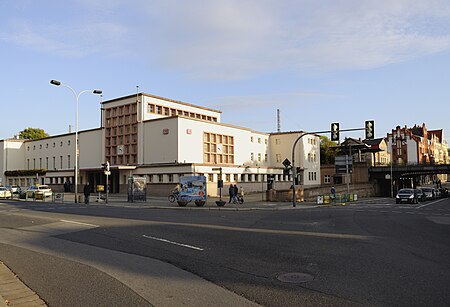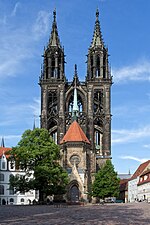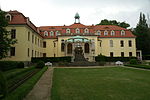Meißen station
Dresden S-Bahn stationsMeissenRailway stations in Germany opened in 1860Railway stations in Saxony

Meißen station is the largest railway station in the town of Meissen in the German state of Saxony. The station was opened in 1860 in the district of Cölln. Its entrance building, which was built in 1928, is a heritage-listed building and along with the Stuttgart Hauptbahnhof it is considered an architecturally significant transport complex of the interwar period. After the ending of long-distance traffic in the 1960s, the station is now a station of the Dresden S-Bahn with only regional significance.
Excerpt from the Wikipedia article Meißen station (License: CC BY-SA 3.0, Authors, Images).Meißen station
Großenhainer Straße,
Geographical coordinates (GPS) Address Nearby Places Show on map
Geographical coordinates (GPS)
| Latitude | Longitude |
|---|---|
| N 51.163056 ° | E 13.4825 ° |
Address
Meißen
Großenhainer Straße
01662 , Vorbrücke
Saxony, Germany
Open on Google Maps









